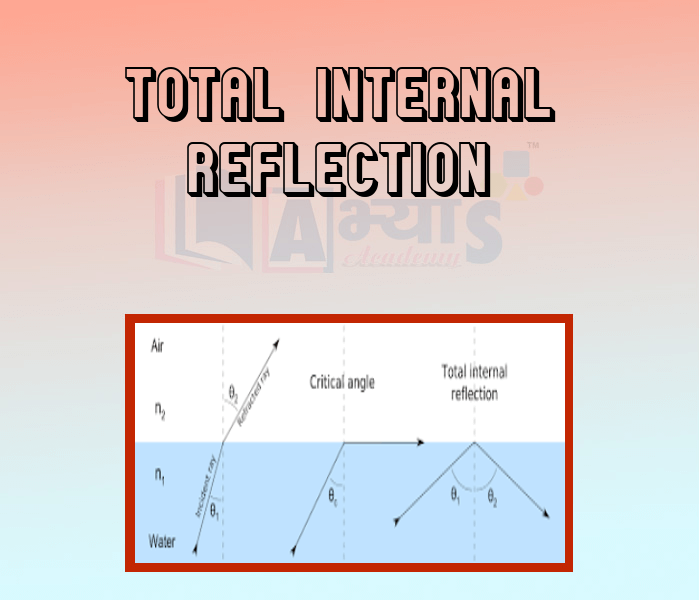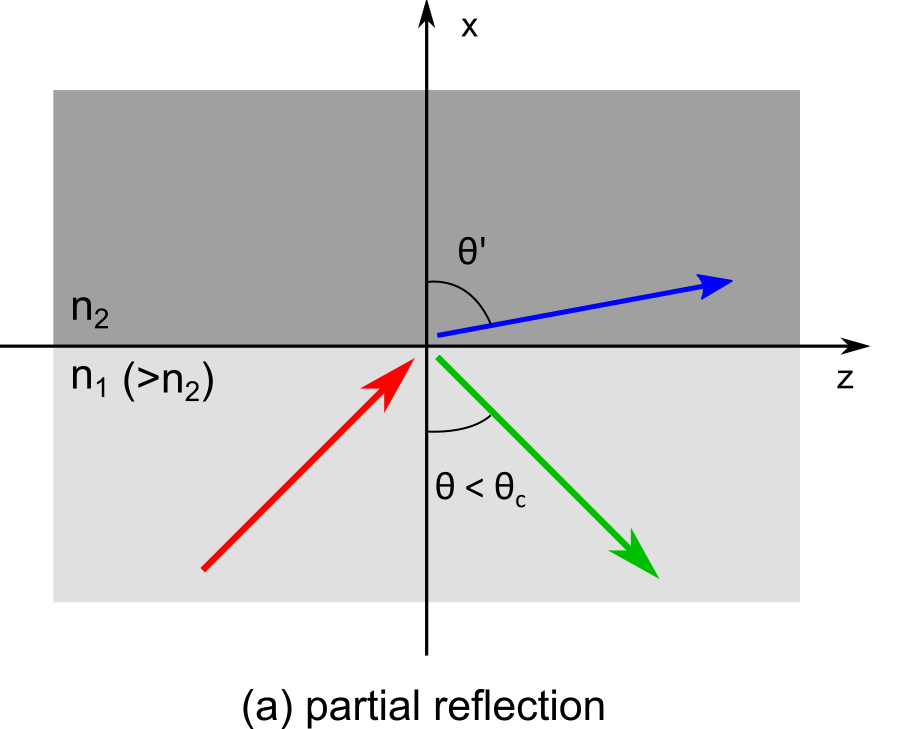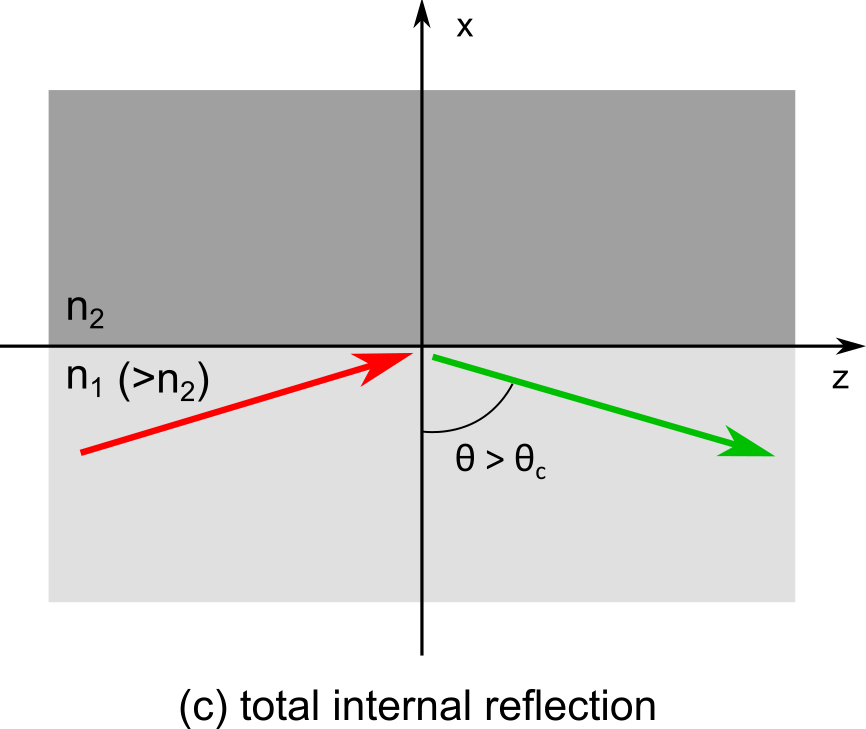Total Internal Reflection







Total Internal Reflection
When a ray of light travels from denser(higher refractive index) to the rarer (low refractive index) medium, it bends away from the normal . This means that angle of refraction is greater than angle of incidence
. With increase in the angle of incidence, the angle of refraction also increases.The figure below shows the incident ray in red colour, the refracted ray with blue colour and the green colour ray shows the part of ray which is reflected.

At a particular value of called as critical angle the angle of refraction becomes
.At this angle refracted ray then comes out parallel to the surface seprating the two media The figure below shows the incident ray in red colour, the refracted ray with blue colour and the green colour ray shows the part of ray which is reflected. We see that the blue ray grazes the surface seprating the two media.
The relation between the critical angle and the refractive index is

As we increase the angle above the critical angle it results in reflecting back of the ray into the same medium. This reflection obeys the law of reflection therefore angle of reflection of ray is equal to the angle of incidence
above the critical angle. The figure below shows the incident ray in red colour, As the angle of incidence is more than the critical angle there is no refracted ray hence there is no blue coloured ray and the green colour ray shows the reflected ray, which follows the laws of reflection..

Thus the total internal reflection of light takes place when a ray of light travels in a denser medium and is incident on the boundary with rarer medium at an angle greater that the critical angle. It is known as total reflection because when a ray falls obliquely on the interface of the two transparent medium, a part of it is reflected and a part of it is refracted. When the angle of incidence is greater than critical angle, the whole of the light ray is reflected. Hence it is called total internal reflection.
For and
, from Snell's law
Substituting the values of i and r, we get
Which of the following are correct ? (a) When a ray of light travels from rarer to the denser medium, it bends away from the normal .With increase in the angle of incidence, the angle of refraction also increases. (b) When the angle of incidence is greater than critical angle, the whole of the light ray is reflected. Hence it is called total internal reflection . (c) The critical angle is different for different pairs of media. | |||
| Right Option : B | |||
| View Explanation | |||
Total internal reflection takes place when a ray of light travels from ___________________________ | |||
| Right Option : A | |||
| View Explanation | |||
In the case of total internal reflection the higher the refractive index of the ______________ medium, the smaller is the critical angle for the pair. | |||
| Right Option : A | |||
| View Explanation | |||
Students / Parents Reviews [10]
Abhyas is a complete education Institute. Here extreme care is taken by teacher with the help of regular exam. Extra classes also conducted by the institute, if the student is weak.

Om Umang
10thMy experience with Abhyas academy is very good. I did not think that my every subject coming here will be so strong. The main thing is that the online tests had made me learn here more things.

Hiya Gupta
8thIt has a great methodology. Students here can get analysis to their test quickly.We can learn easily through PPTs and the testing methods are good. We know that where we have to practice

Barkha Arora
10thAbout Abhyas metholodology the teachers are very nice and hardworking toward students.The Centre Head Mrs Anu Sethi is also a brilliant teacher.Abhyas has taught me how to overcome problems and has always taken my doubts and suppoeted me.

Shreya Shrivastava
8thI have spent a wonderful time in Abhyas academy. It has made my reasoning more apt, English more stronger and Maths an interesting subject for me. It has given me a habbit of self studying

Yatharthi Sharma
10thMy experience with Abhyas is very good. I have learnt many things here like vedic maths and reasoning also. Teachers here first take our doubts and then there are assignments to verify our weak points.

Shivam Rana
7thAbhyas Methodology is very good. It is based on according to student and each child manages accordingly to its properly. Methodology has improved the abilities of students to shine them in future.

Manish Kumar
10thIt was a good experience with Abhyas Academy. I even faced problems in starting but slowly and steadily overcomed. Especially reasoning classes helped me a lot.

Cheshta
10thA marvelous experience with Abhyas. I am glad to share that my ward has achieved more than enough at the Ambala ABHYAS centre. Years have passed on and more and more he has gained. May the centre flourish and develop day by day by the grace of God.

Archit Segal
7thOne of the best institutes to develope a child interest in studies.Provides SST and English knowledge also unlike other institutes. Teachers are co operative and friendly online tests andPPT develope practical knowledge also.
